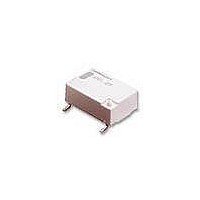G6L-1F-DC12 Omron, G6L-1F-DC12 Datasheet - Page 8

G6L-1F-DC12
Manufacturer Part Number
G6L-1F-DC12
Description
Low Signal Relays - PCB LO PROF SPST 12VDC
Manufacturer
Omron
Series
G6Lr
Specifications of G6L-1F-DC12
Coil Type
Non-Latching
Coil Current
15 mA
Contact Form
1 Form C
Coil Voltage
12 VDC
Power Consumption
180 mW
Termination Style
Solder Pad
Maximum Switching Current
1 A
Contact Rating
0.3 A at 125 VAC, 1 A at 24 VDC
Contact Configuration
SPST-NO
Contact Current Max
1A
Contact Voltage Ac Nom
125V
Contact Voltage Dc Nom
24V
Coil Voltage Vdc Nom
12V
Lead Free Status / RoHS Status
Lead free / RoHS Compliant
Lead Free Status / RoHS Status
Lead free / RoHS Compliant, Lead free / RoHS Compliant
Other names
12DC 12DC, G6L-1F G6L1F12DC,
Available stocks
Company
Part Number
Manufacturer
Quantity
Price
Company:
Part Number:
G6L-1F-DC12V
Manufacturer:
OMRON
Quantity:
12 000
G6L
Precautions
Refer to page 25 for information on general precautions. Be sure
to read these precautions before using the Relay.
Correct Use
Long-term Continuously ON Contacts
Using the Relay in a circuit where the Relay will be ON
continuously for long periods (without switching) can lead to
unstable contacts because the heat generated by the coil itself
will affect the insulation, causing a film to develop on the contact
surfaces. Be sure to use a fail-safe circuit design that provides
protection against contact failure or coil burnout.
Relay Handling
Use the Relay as soon as possible after opening the moisture-
proof package. If the Relay is left for a long time after opening the
moisture-proof package, the appearance may suffer and seal
failure may occur after the solder mounting process. To store the
Relay after opening the moisture-proof package, place it into the
original package and sealed the package with adhesive tape.
When washing the product after soldering the Relay to a PCB,
use a water-based solvent or alcohol-based solvent, and keep the
solvent temperature to less than 40ºC. Do not put the Relay in a
cold cleaning bath immediately after soldering.
Soldering
Soldering temperature: Approx. 250ºC (At 260ºC if the DWS
method is used.)
Soldering time: Approx. 5 s max. (approx. 2 s for the first time and
approx. 3 s for the second time if the DWS method is used.)
Be sure to adjust the level of the molten solder so that the solder
will not overflow onto the PCB.
Claw Securing Force During Automatic Insertion
During automatic insertion of Relays, make sure to set the
securing force of the claws to the following values so that the
Relay characteristics will be maintained.
Environmental Conditions During Operation, Storage, and
Transportation
Protect the Relays from direct sunlight and keep the Relays under
normal temperature, humidity, and pressure.
56
Cat. No. K119-E1-02
Secure the claws to the area indicated by shading.
Do not attach them to the center area or to only part of the
Relay.
ALL DIMENSIONS SHOWN ARE IN MILLIMETERS.
To convert millimeters into inches, multiply by 0.03937. To convert grams into ounces, multiply by 0.03527.
A
Direction A: 5.0 N max.
Direction B: 5.0 N max.
Direction C: 5.0 N max.
C
B
Maximum Voltage
The maximum voltage of the coil can be obtained from the coil
temperature increase and the heat-resisting temperature of coil
insulating
temperature may result in burning or short-circuiting.) The
maximum voltage also involves important restrictions which
include the following:
• Must not cause thermal changes in or deterioration of the
• Must not cause damage to other control devices.
• Must not cause any harmful effect on people.
• Must not cause fire.
Therefore, be sure not to exceed the maximum voltage specified
in the catalog.
As a rule, the rated voltage must be applied to the coil. A voltage
exceeding the rated value, however, can be applied to the coil
provided that the voltage is less than the maximum voltage. It
must be noted that continuous voltage application to the coil will
cause a coil temperature increase thus affecting characteristics
such as electrical life and resulting in the deterioration of coil
insulation.
Coating
Relays mounted on PCBs may be coated or washed. Do not
apply silicone coating or detergent containing silicone, otherwise
the silicone coating or detergent may remain on the surface of the
Relays.
Coil Power Supply Waveform
If the voltage applied to the coil is increased or decreased
gradually, operating characteristics may be unstable, contact
endurance may decline, or the Relay may not function at its full
performance level. Therefore, always use an instantaneous ON
and instantaneous OFF when applying the voltage. Be sure that
the rated voltage or zero voltage is reached within 1 ms.
insulating material.
sheath
material.
(Exceeding
the
heat-resisting
G6L












